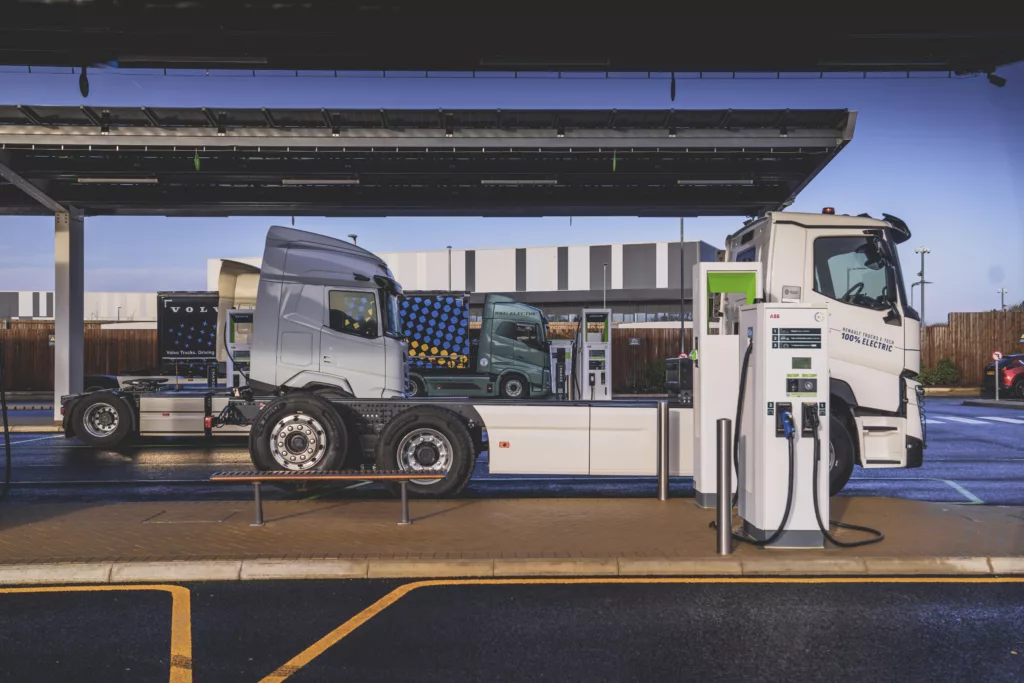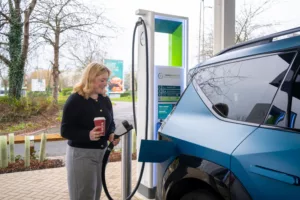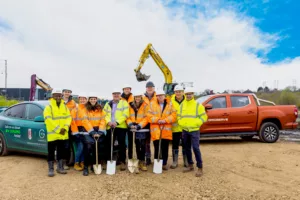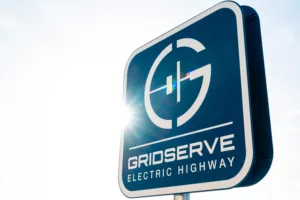

Report One of our Electric Freightway project has just been published by our principal partner, Hitachi ZeroCarbon, and it’s a big read. Full details can be found here, but in this article we’ll provide you with a summary of the most important bits.
Let’s begin with a recap…
Electric Freightway is part of the UK Government’s Zero Emission HGV and Infrastructure Demonstrator (ZEHID) Programme. The Department for Transport and Innovate UK is providing special funding to projects that can ‘demonstrate’ how the UK can decarbonise Heavy Goods Vehicles (HGVs) in the shortest possible timeframes.
After all, HGVs contribute 20% of the UK’s transport greenhouse gas emissions, and as other sectors decarbonise more rapidly, that percentage share is likely to increase.
Electric Freightway was one of four successful recipients of funding and aims to lay the foundations for a nationwide charging network dedicated to electric HGVs. GRIDSERVE is leading the Electric Freightway, but the strength of this project comes from the vastly experienced consortium members also involved, including hauliers, manufacturers, leasing partners, landowners and many more.
What are the project commitments?
The first phase of the project, scheduled to conclude in July 2025, will involve the installation of a network of eHGV charging stations across the UK. GRIDSERVE has committed to install up to 200 High Power eHGV chargers around a mixture of 30 public and private depot sites.
In parallel, Electric Freightway’s HGV operator and truck manufacturer partners will put around 140 electric trucks on the road and begin operating them in a variety of scenarios to test their real-world feasibility. To put the enormity of that investment into context, just 234 zero emission HGVs were registered in the UK during 2023.
And where does Hitachi ZeroCarbon fit in?
Hitachi ZeroCarbon is our principal partner and will be responsible for capturing and analysing the vast amount of vehicle and infrastructure data produced over the project’s five-year lifespan.
This information will allow HGV operators to make informed decisions about whether eHGVs can meet their route requirements and how to take advantage of the benefits of eHGVs. It will also be conducting stakeholder surveys, gathering and anonymising both qualitative and quantitative data, all of which will inform a series of five reports.
And the First Report has just been published?
Correct and this one covers the project’s introduction and approach. Over the last six months, GRIDSERVE has been focused on working with its project partners to scope out their vehicle and infrastructure requirements.
This spring, some consortium members will begin receiving their first eHGV orders to put straight into service, while GRIDSERVE is expecting sign-off from a combination of landowners, adjacent business owners, local government and Distribution Network Operators (DNOs) to begin the installation of its first eHGV charging depot.
Additionally, Hitachi ZeroCarbon will begin conducting a repeatable survey of drivers and fleet managers to compare their perceptions of eHGVs over time, while gathering useful data from their initial operational experience.
Report Two will be published later this year and focus on the practical experiences gained from the programme’s eHGV fleets and eHGV charging infrastructure, alongside some initial insights documenting driver and manager attitudes.




